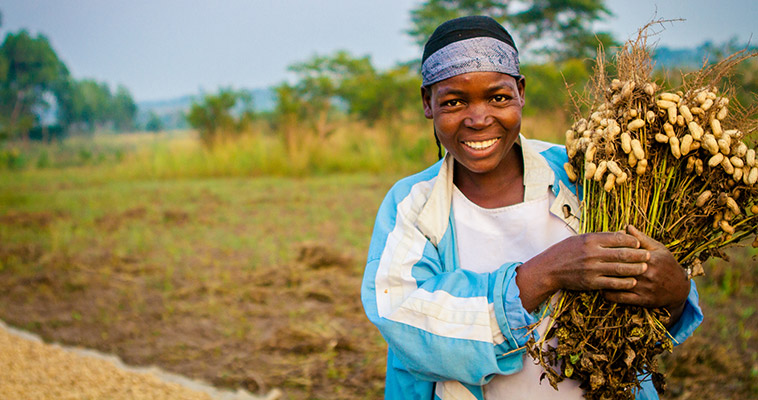- What We Do
- Agriculture and Food Security
- Democracy, Human Rights and Governance
- Economic Growth and Trade
- Education
- Environment and Global Climate Change
- Gender Equality and Women's Empowerment
- Global Health
- Humanitarian Assistance
- Transformation at USAID
- Water and Sanitation
- Working in Crises and Conflict
- U.S. Global Development Lab
Speeches Shim

-
Uganda

-
Population
41.5 Million
-
Pop. Under 5
7.7 Million
-
% Stunting
29% Of Children Under 5
-
% Underweight
11% Of Children Under 5
Photo credit: CNFA
Malnutrition in childhood and pregnancy has many adverse consequences for child survival and long-term well-being. It also has far-reaching consequences for human capital, economic productivity, and national development overall. The consequences of malnutrition should be a significant concern for policy makers in Uganda, where 2.2 million children under 5 years (29 percent) suffer from stunting (low height-for-age), according to the most recent Demographic and Health Survey (DHS) . Stunting is the result of growing under limited provision of food, health, and care.
USAID Programs: Accelerating Progress in Nutrition
As of January 2018, the following USAID programs with a focus on nutrition were active in Uganda. The U.S. Government selected Uganda as one of 12 Feed the Future target countries for focused investment under the new U.S. Government Global Food Security Strategy. USAID is the lead agency implementing Feed the Future, the U.S. Government’s global hunger and food security initiative. In Uganda, Feed the Future is in 38 focus districts in four geographic areas: northern Uganda, Karamoja, southwest Uganda, and eastern Uganda. The Feed the Future Uganda strategy focuses on three main components: nutrition, resilience and agriculture. It includes three value chains (maize, coffee, and beans) as the agricultural component, facility-and community-based prevention and treatment of malnutrition as the nutrition component, and a community-level integrated approach to connect the two. The Feed the Future strategy also incorporates a strong gender focus, recognizing women as caregivers and producers and processers of food. Approximately 70 percent of smallholder farmers are women, but they own only 8 percent of farming land and largely do not participate in decision making related to agriculture.
- Regional Health Integration to Enhance Services in Eastern Uganda (RHITES-E)
- Regional Health Integration to Enhance Services in East Central Uganda (RHITES-EC)
- HarvestPlus Meals for Nutrition in Uganda (MENU)
- Regional Health Integration to Enhance Services in Southwest Uganda (RHITES-SW)
- Communication for Healthy Communities (CHC)
- Strengthening Human Resources for Health Activity
- Food and Nutrition Technical Assistance III (FANTA) Project
- Advocacy for Better Health (ABH)
- Sustainable Comprehensive Responses for Vulnerable Children and Their Families (SCORE)
- Food for Peace (FFP)

Comment
Make a general inquiry or suggest an improvement.